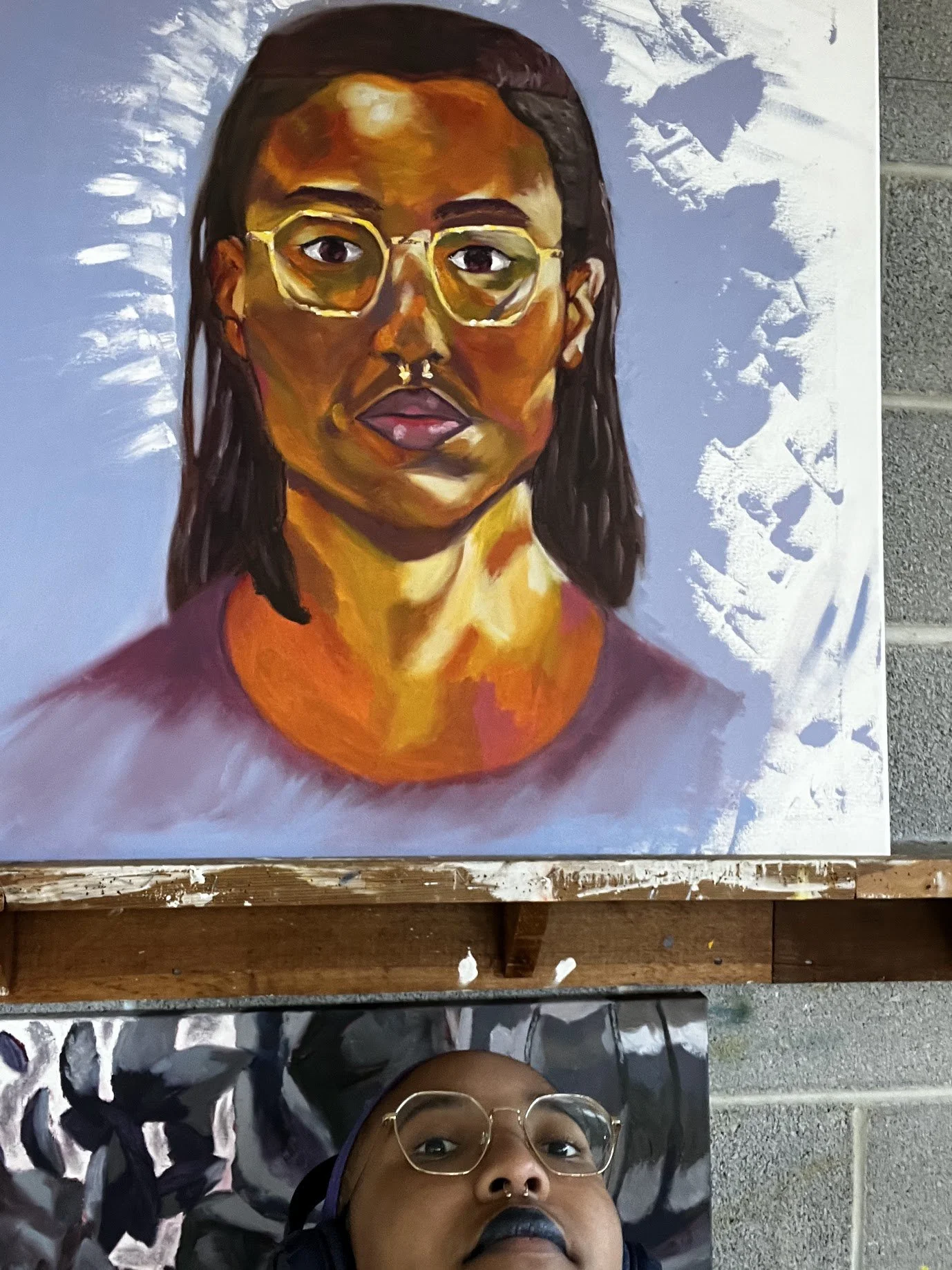about me
-
atw is a multimedia creative earning their BA in Art with emphasis in education (Albion College, MI). They explore the marginalized social “other” as monstrous through an intersectional lens. Their work has been exhibited in Albion College’s Munroe Gallery (2024), Lansing Art Gallery (2024); published in The Albion Review (2024); sold at the Detroit Pancakes & Booze Art Festival (2025), and Albion Art Sale (2023).
Covered in the Blood culminates atw’s research funded through FURSCA, analyzing Biblical narratives and white supremacy. They work as the Teaching Assistant for printmaking (all levels) and Assistant Director of the Writing Center at Albion College.
-
Monsters must exist as long as we draw a boundary around what we consider “human.” For there to be an us, there must be a them. While the distinction is a natural consequence wherever community is developed, the human-monster border is one that is zealously enforced, preventing fluid movement between the two spaces. An oppressive dominant culture – in western society, the white capitalist patriarchy – dictates not only the majority, but defines normalcy. To justify their supremacy they must incentivize human membership, or disincentivize monstrosity. In our case, a punitive system of “justice” was established, affixing a moral status to the two groups: Humans are just. Monsters are evil.
In discussions of violence, humans are most often portrayed as the victims of monsters’ brutality. White knights and mobs with pitchforks are largely excluded from the definition of violence, once again reflecting the inherent innocence of humanity – the privilege of righteous violence. If a monster deviates from its acceptable roles – silent labor, shallow entertainment, or total assimilation – the stereotype is reinforced. Because they are monsters and monsters are evil, they are deserving of subjugation, exploitation, and suffering. When the established norm is highly exclusive and punishment is the default response to abnormal behavior, violence becomes normal. It is the expression of the oppressive dominant culture’s supremacy over all others.
My work invites audiences to evaluate their identities in relation to the white, capitalist, able-bodied, patriarchal, cisheterosexist norm. The label “human” – like the label “white” – has an ever shifting definition, creating a fluid moving goalpost that bends and blurs to include some but never all. As monsters, we are all vulnerable to becoming the next target of the authorized white knight or the fascist mob. Rather than remain complacent in this system of monster-hunting, I encourage audiences to embrace themselves as other from the norm – as genuine monsters – and build community among monstrous others. If we hunt monsters to extinction, what will happen to the one in your shadow, in your reflection, in your self?
